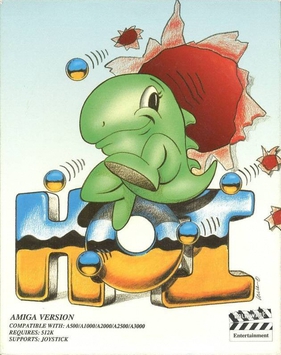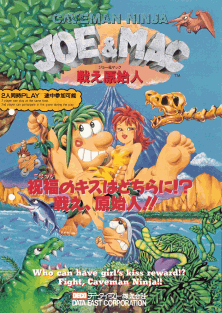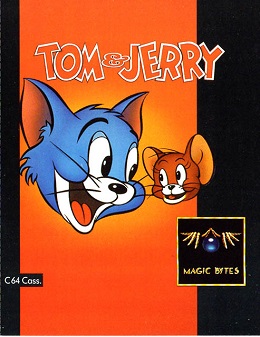
Zool 2 is a side-scrolling platform video game originally developed by The Warp Factory and published by Gremlin Graphics for the Amiga in November 1993. It is the sequel to the original Zool, which was released earlier in 1992 on various platforms.
Sturmtruppen is a successful Italian series of anti-war comic books written and drawn by Bonvi, the artistic pseudonym of Franco Bonvicini. It started as four-frame comic strips back in 1968 and evolved into fully sized collector books by the 1990s. The series continued until the early 2000s.

Pinball Fantasies is a 1992 pinball video game originally developed by Digital Illusions and published by 21st Century Entertainment in Europe for the Amiga home computers. It is the sequel to Pinball Dreams, which was released earlier in the same year on multiple platforms. In the game, players can choose between any of the four available playfields, both of which have their own thematic and main objectives in order to obtain the highest score possible.

Top Banana is an environmentally-themed platform game produced by Hex and Psycore for the Acorn Archimedes in 1991 and ported to the Amiga and Atari ST in 1992. The chief artist and coder was Miles Visman, with supporting graphics and sound by Karel Dander, and supporting graphics by Sophie Smith, Robert Pepperell and Matt Black. Top Banana was released using recycled cardboard packaging, furthermore being advertised as being the 'first video game with recycled packaging'. Top Banana's plot is about trying to save the environment from pollution using love.

Soccer Kid is a 1993 side-scrolling platform game developed and published by Krisalis Software in Europe for the Amiga. The player assumes the role of the titular main protagonist who travels across several countries around the world to repair the World Cup by retrieving pieces that were scattered by the alien pirate Scab, the main antagonist who failed to steal and add it to his trophy collection in a robbery attempt. Its gameplay mainly consists of platforming and exploration elements, with a main single-button or two-button configuration, depending on the controls setup.

Hoi is a 1992 platform video game developed by Team Hoi and published by Hollyware Entertainment in North America and Software Business in Europe for the Amiga. In the game, players assume the role of the titular lime green "Saur" character venturing into the "Madlands", an area within Hoi's home planet populated with obstacles, to face a ritual test of maturity and find a female partner.

The Humans is a puzzle-platform video game developed by Imagitec Design in Dewsbury, England and originally published by Mirage Technologies for the Amiga in May 1992. It was later ported to other home computers and consoles. The goal of the game varies per level but usually revolves around bringing at least one of the player-controlled humans to the designated end area marked by a colored tile. Doing this requires players taking advantage of the tribe's ability to build a human ladder and use tools such as spears, torches, wheels, ropes and a witch doctor in later levels.

Cattivik is an Italian humoristic comic book character created by Bonvi.

Switchblade II is a 1991 side-scrolling action-platform run and gun video game originally developed and published by Gremlin Graphics in Europe for the Amiga home computers. It is the sequel to the original Switchblade, which was solely created by Simon Phipps at Core Design and released earlier in 1989 across multiple platforms. Despite being primarily developed in the UK, its graphics had a distinctly Japanese style similar to anime or manga.

Monster Business is a 1991 vertically scrolling platform game developed by Eclipse Software Design and published by Ascon that was released for the Amiga and Atari ST.

Joe & Mac, also known as Caveman Ninja and Caveman Ninja: Joe & Mac, is a 1991 run and gun platform game released for arcades by Data East. It was later adapted for the Super NES, Mega Drive/Genesis, Nintendo Entertainment System, Game Boy, Amiga, Zeebo, Nintendo Switch, and PC.

Crazy Sue Goes On, also known as Crazy Sue 2 and Crazy Sue II, is a 2D platform game for the Amiga which is the sequel to Crazy Sue, in which the player again takes the role of the little girl named Crazy Sue, and must defeat the wife of the evil Wizard of Doom whom she defeated in the first game.

Black Crypt is a role-playing video game. It was Raven Software's debut title, and was published for the Amiga by Electronic Arts in 1992. Its 3D realtime style is similar to FTL Games' popular Dungeon Master, where the player leads a party of four heroes through a large dungeon to ultimately confront and defeat a powerful enemy. A version for the Sega Mega Drive was in development but never released.

Batman is an action video game developed and published by Ocean Software based on the 1989 film of the same name. It was released on 11 September 1989 for the Commodore 64 and ZX Spectrum with Amiga, Amstrad CPC, Atari ST, MS-DOS and MSX versions following soon after.

Switchblade is a 1989 side-scrolling action-platform run and gun video game originally developed by Core Design and published by Gremlin Graphics in Europe for the Atari ST home computers. The first installment in the eponymous two-part series, the game is set in a dystopian future where players assume the role of Hiro from the Blade Knights as he embarks on a journey to defeat Havok, the main antagonist who broke free from his imprisonment after the sacred Fireblade was shattered into several pieces. Its gameplay consists of run and gun action mixed with platforming and exploration elements, with a main single-button configuration.

Abandoned Places: A Time for Heroes is a 1992 Hungarian dungeon crawler role-playing video game developed by ArtGame and published by International Computer Entertainment for Amiga and DOS platforms. A sequel, Abandoned Places 2, was released in 1993 for Amiga.

Tom & Jerry is a 1989 platform game developed and published by German company Magic Bytes. It is the first video game based on the cartoon of the same name, and was released in the United States and Europe, for Amiga, Atari ST, and Commodore 64 computers.

Die Kathedrale is a 1991 German text adventure game developed by Weltenschmiede and published by Software 2000 for the Amiga and DOS. Die Kathedrale is part of a text adventure trilogy; it is preceded by Das Stundenglas (1990) and succeeded by Hexuma (1992). The trilogy lacks an overarching plot, and in each entry the setting, role of the protagonist, and goal differ between each game. Games in the trilogy do not require knowledge of the other entries and may be played as standalone games.

Cover Girl Strip Poker, alternately titled Cover Girl Poker, is a 1991 erotic video game based upon five-card strip poker and originally developed and self-published by Emotional Pictures; it was released for the Amiga, DOS, Commodore 64, CDTV, and CD32. Cover Girl Strip Poker is the original Danish title; it was retitled Cover Girl Poker outside of Denmark in the rest of Europe, and the title was subsequently reverted to Cover Girl Strip Poker for the European CDTV and CD-ROM DOS releases. Emotional Pictures was a subsidiary of Danish company InterActive Vision A/S.

Deathbringer is a 1991 side scrolling action game developed by Oxford Digital Enterprises and published by Empire that was released for the Amiga, DOS, and Atari ST.